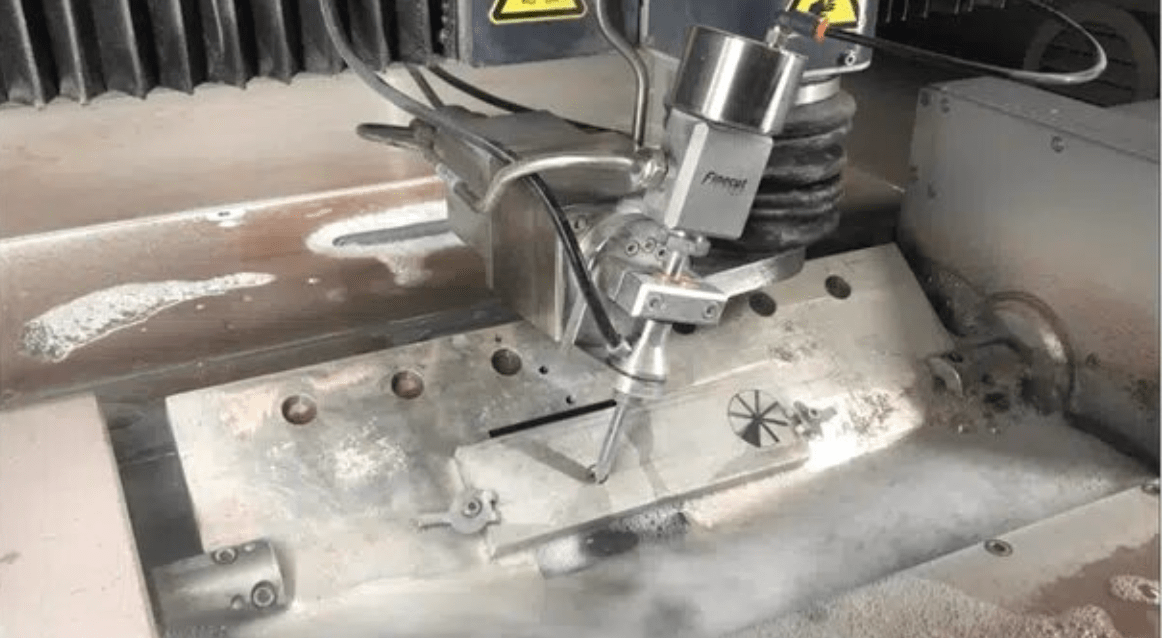As waterjet cutting was installed in traditional manufacturing workshops, it was essential to control the cutter reliably and accurately. The first waterjet cutting systems adapted traditional systems such as mechanical pantographs and CNC systems based on the 1952 John Parsons NC milling machine and the G-code currently in operation.
Waterjet cutting table are now available in a wide range of standard sizes, ranging from small 2′ 5″ x 2′ 2″ (737mm x 660mm) tables to very large 26′ 8″ – 46′ 8″ x 13′ 4″ (8.1m – 14.2m x 4m) tables. The two considerations in selecting a table size are the size of the part to be made and the size of the stock material used.
It is generally easiest and most economical to err on the side of a larger table that will handle all intended material stock sizes and future more significant parts.
A Water jet cutter is an industrial tool (stone cutting machine) able to cut lots of materials using a high-pressure jet of water mixed with an abrasive substance. Water jet cutters are also known as water jets or waterjets.
Pure waterjet (or water-only cutting) is used for wood or rubber because they cannot cut hard materials. (The article will discuss pure water jets and other kinds below.) when a waterjet uses a mixture of water and abrasives, it can be called an abrasive jet; if the waterjet does not use abrasives, the term pure waterjet or water-only cutting can be used.
Waterjets can cut hard materials by pressurizing water to ultra-high pressures and creating a powerful cutting stream (up to 6000 bars). The stream moves at up to 3 times the speed of sound. Below mentioned are a few types of waterjets,
Pure Waterjet
Pure waterjet cuts soft materials like a gasket, foam, plastic, paper, disposable diapers, insulation, cement board, automotive interiors, carpet, and food.
Abrasive Waterjet
Abrasive waterjet is similar to a pure waterjet, except that after the conventional waterjet is created, garnet abrasive is pulled into the head via a venturi vacuum and mixed with the water. Then the resulting abrasive waterjet stream can cut hard materials like metal, ceramic, stone, glass, and composite.
Micro Abrasive Waterjet
It is a non-thermal process that does not change material properties. The fact that it is also effective in composite materials is an essential advantage in materials with disparate material properties, such as carbon fiber reinforced epoxy with mold-in titanium parts.
Finepart is one of the companies with a team with a solid technical background. It is highly innovative and solution-oriented, which has allowed the company to provide manufacturing solutions for advanced components. They are equipped with cutting system for abrasive cutting as well as pure water jet cutting systems.
The team members’ background in research and development of waterjet technology for more than three decades in academic and industrial applications and services for more than 35 years is a significant benefit.
The Finepart team strives to work closely with the customers to learn and understand the functional requirements and challenges. In tests and result dialogue, the whole team aims to jointly find an optimum path to technical success and ensure the smooth introduction of our technology on-site to the customer.
Finepart offers initial production of the customer parts, involving fixturing development and process optimization, and the customer’s operators can even start producing at our facilities. Utilizing this opportunity will provide super-fast implementation upon installation on the customer’s site.



